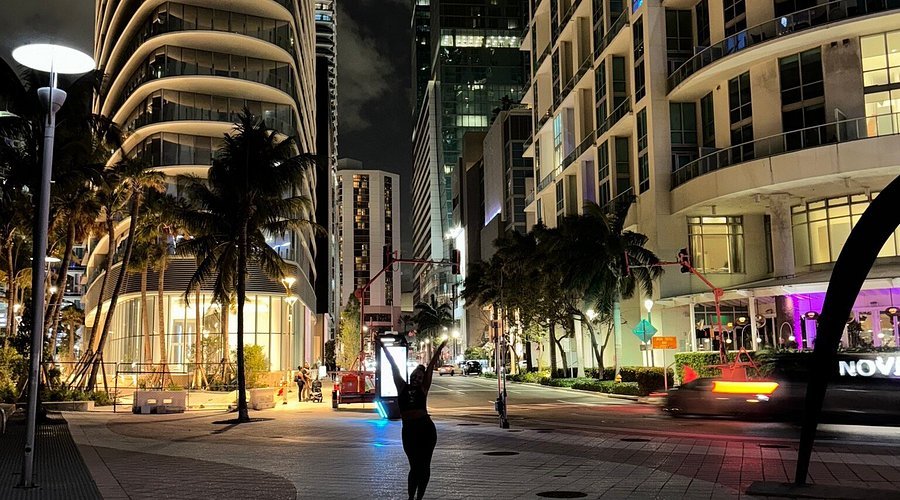Moving from New York to Miami in 2025: A Comprehensive Guide for New Yorkers

Table of Contents
- Why So Many New Yorkers Are Moving to Miami in 2025
- Cost of Living: Miami vs New York Breakdown
- Lifestyle Differences Between NYC and Miami
- Best Miami Neighborhoods for New Yorkers
- Establishing Florida Residency and Tax Considerations
- Job Market and Career Opportunities
- Moving Logistics: Planning Your NYC to Miami Relocation
- Common Mistakes New Yorkers Make When Moving to Miami
- Frequently Asked Questions
The migration of New Yorkers to Miami has evolved from a gradual trend into a sustained movement reshaping both metropolitan areas. Moving from New York to Miami represents more than a simple geographic relocation; it constitutes a fundamental lifestyle transformation driven by economic considerations, quality of life priorities, and shifting work paradigms that have accelerated dramatically since 2020. Understanding the practical implications, financial impact, and cultural adjustments this transition entails enables New Yorkers to make informed decisions and establish successful transitions to South Florida.
Miami’s emergence as a viable alternative to New York for professionals, families, and retirees reflects convergence of multiple factors that address long-standing pain points of New York living while offering compelling advantages. The absence of state income tax, substantially lower housing costs relative to Manhattan and desirable Brooklyn neighborhoods, year-round warm weather, and burgeoning business ecosystem create an attractive value proposition. However, the transition requires careful navigation of differences in urban infrastructure, cultural atmosphere, and daily living patterns that distinguish Miami fundamentally from New York. This guide examines the critical considerations New Yorkers face when contemplating this significant move, providing data-driven analysis and practical insights from professionals who have guided hundreds of families through successful NYC to Miami relocations.
Ready to Make Your Move from New York to Miami?
Let our expert team guide you through every step of your relocation to South Florida.
Why So Many New Yorkers Are Moving to Miami in 2025
The exodus of New Yorkers to Miami continues accelerating as remote work permanence, tax policy differences, and lifestyle reassessment converge to make relocation increasingly attractive across demographic segments. According to U.S. Census Bureau data, Florida gained over 700,000 residents between 2020 and 2023, with New York representing the single largest source state for these migrants. Miami-Dade and Broward counties absorbed substantial portions of this influx, transforming neighborhoods and creating recognizable New York cultural transplants throughout South Florida.
Economic migration forms the primary driver, as New York’s combined state and city income tax burden reaching up to 14.776 percent for high earners contrasts starkly with Florida’s zero percent state income tax. For professionals earning substantial salaries, this differential translates to tens of thousands of dollars annually in tax savings that compound dramatically over decades. The Tax Foundation estimates that a New York City resident earning $250,000 annually saves approximately $25,000 in state and local income taxes by establishing Florida residency, creating powerful financial incentive independent of other considerations.
The remote work revolution eliminated geographic constraints that previously bound professionals to New York regardless of personal preference or cost burden. Technology, finance, and creative industries that historically required physical presence in Manhattan offices discovered productivity remained robust with distributed teams. This revelation liberated employees to prioritize quality of life, housing affordability, and tax efficiency without sacrificing career trajectory or compensation. Major companies including Goldman Sachs, Blackstone, and numerous hedge funds established Miami offices, creating pathways for professionals to relocate while maintaining employer relationships and advancement opportunities.
Real estate investment considerations appeal particularly to New Yorkers selling appreciated properties in Brooklyn, Queens, or Manhattan and recognizing purchasing power advantages in Miami markets. A two-bedroom condominium in a desirable Manhattan neighborhood might sell for $1.5 million, enabling purchase of a luxury waterfront property in Miami with funds remaining for investment or reserves. This wealth transfer effect allows New Yorkers to upgrade housing quality, square footage, and amenities while reducing or eliminating mortgage obligations, fundamentally improving financial positions.
Quality of life factors resonate increasingly with New Yorkers reassessing priorities, particularly following the pandemic period that highlighted the appeal of outdoor access, temperate weather, and less congested environments. Miami’s year-round warm climate eliminates the months of winter that constrain outdoor activities in New York, while proximity to beaches, parks, and recreational amenities creates lifestyle opportunities difficult to replicate in dense urban environments. For families with children, the appeal of outdoor play, water sports, and consistent sunshine throughout the year represents meaningful enhancement to childhood experiences.
Cost of Living: Miami vs New York Breakdown

Comprehensive cost comparison between New York and Miami reveals substantial differences across housing, taxation, transportation, and daily expenses, though the gap narrows when examining premium Miami neighborhoods that attract New York transplants. Moving from New York to Miami typically generates significant cost savings, though the magnitude depends heavily on specific neighborhood selections and lifestyle maintenance expectations.
Housing costs present the most dramatic differential, with median home prices in Miami-Dade County approximately $565,000 compared to median prices exceeding $1.2 million in desirable New York City neighborhoods according to Zillow data. However, this comparison requires nuance, as New Yorkers typically target specific Miami neighborhoods comparable in amenities and urban character to their previous locations rather than county-wide averages. Brickell condominiums, Coral Gables estates, or waterfront properties in Coconut Grove command prices approaching or exceeding $1 million, though they still deliver superior value in square footage and amenities compared to equivalent New York properties.
Rental markets demonstrate similar patterns, with one-bedroom apartments in Brickell averaging $2,800 monthly compared to $3,800 in Manhattan according to Realtor.com data, representing approximately 26 percent savings. Two-bedroom units show even greater differentials, with Miami averages around $3,500 versus $5,200 in Manhattan. These savings compound monthly, generating substantial annual housing cost reductions that partially offset other expenses or fund lifestyle enhancements.
Tax Savings Example: A New York City resident earning $250,000 annually saves approximately $25,000 in state and local income taxes by establishing Florida residency. Over 10 years, this represents $250,000 in savings that can be invested or used to enhance quality of life.
Taxation differences extend beyond income tax to property tax structures that favor Florida homeowners establishing primary residences. While Miami-Dade County property tax rates range from 1.5 to 2.5 percent of assessed value, Florida’s homestead exemption reduces taxable value by $50,000 for primary residents, and the Save Our Homes provision caps annual assessment increases at three percent. New York City property taxes, combined with state and local levies, often exceed Florida’s total burden despite nominally lower rates. Additionally, Florida imposes no estate tax or inheritance tax, creating long-term wealth transfer advantages for families with substantial assets.
Transportation costs shift dramatically when moving from New York to Miami, though not uniformly in one direction. New Yorkers accustomed to subway passes costing $132 monthly face vehicle ownership requirements in car-dependent Miami, including payments, insurance, fuel, tolls, and maintenance potentially exceeding $800 monthly. However, this expense replaces taxi and rideshare costs that many New Yorkers incur regularly, and eliminates the premium many pay for apartments with parking or garage rentals. Additionally, Florida’s lower insurance costs compared to New York offset portions of vehicle expenses, though this advantage has diminished as Florida insurance rates have increased substantially in recent years.
Utility costs in Miami typically exceed New York expenses, particularly for air conditioning during summer months when cooling costs can reach $300 to $500 monthly for larger homes. Year-round cooling requirements in subtropical climates create ongoing expenses that New Yorkers accustomed to more moderate electricity bills should anticipate. However, heating costs essentially disappear, creating seasonal offsets that balance annual utility expenditures somewhat.
Groceries and dining costs demonstrate rough parity between cities, with Miami’s restaurant scene offering comparable quality and diversity at similar or slightly lower price points than New York. Sales tax rates differ marginally, with Miami-Dade County at seven percent versus New York City at 8.875 percent, generating modest savings on consumer purchases that accumulate over time.
Lifestyle Differences Between NYC and Miami

The cultural and atmospheric differences between New York and Miami prove more substantial than many relocating New Yorkers anticipate, requiring psychological adjustment and openness to different urban rhythms and social patterns. Moving from New York to Miami involves adapting to fundamentally different approaches to urbanism, community, and daily life that shape experiences profoundly.
Urban density and walkability represent perhaps the most immediately apparent distinction, as Miami lacks the pedestrian infrastructure and transit connectivity that defines New York life. While neighborhoods like Brickell and Coconut Grove offer walkable cores, the metropolitan area remains predominantly automobile-dependent, requiring vehicle ownership and accepting driving as the primary transportation mode. New Yorkers accustomed to walking or subway trips for all daily needs must adjust to planning around parking, traffic, and the time consumption of vehicular travel. This shift fundamentally alters daily routines and spontaneity, as quick trips that might involve walking five blocks in Manhattan require driving, parking, and navigating traffic in Miami.
The pace of life in Miami operates at noticeably slower rhythm than New York’s frenetic energy, reflecting both climate influences and cultural differences. The urgency and efficiency that characterizes New York interactions gives way to more relaxed approaches that some New Yorkers find refreshing while others experience as frustrating inefficiency. Service industries operate with less emphasis on speed, and the driving sense of optimization and productivity that permeates New York encounters adjusts to more laid-back Miami attitudes. This cultural difference extends to business environments, where Miami’s developing professional ecosystem maintains somewhat less intensity than established New York industries.
Social and cultural scenes differ substantially in character and accessibility. New York’s unparalleled concentration of world-class museums, theaters, concerts, and cultural institutions exceeds Miami’s offerings considerably, though Miami’s art scene including Art Basel, Design District galleries, and Pérez Art Museum provides meaningful cultural engagement. New Yorkers prioritizing regular access to Broadway productions, Metropolitan Opera performances, or the depth of Manhattan’s museum offerings should acknowledge this represents a genuine trade-off rather than equivalent alternative. However, Miami compensates through outdoor cultural experiences, beach clubs, waterfront dining, and Latin American cultural influences creating distinct rather than inferior cultural landscape.
The social fabric and community building operate differently, with Miami’s newer development and transient population creating less established neighborhood communities compared to New York’s long-standing enclaves. Making social connections requires more intentional effort rather than organic interactions through daily urban encounters common in New York. However, the influx of relocating professionals creates opportunities to connect with others navigating similar transitions, and Miami’s social scene proves welcoming to newcomers actively seeking community integration.
Weather represents perhaps the most universally appreciated difference, with year-round warmth and sunshine eliminating winter months that constrain outdoor activities in New York. This consistent climate access transforms lifestyle possibilities, enabling beach visits, outdoor dining, and recreational activities throughout the year. However, Miami’s intense summer heat and humidity require adjustment, and hurricane season introduces weather considerations absent from New York life. The psychological impact of perpetual summer appeals to many New Yorkers while others surprisingly miss seasonal change that provides natural rhythm and variety throughout the year.
Need Help Finding the Perfect Miami Neighborhood?
Our team specializes in helping New Yorkers find their ideal Miami community.
Best Miami Neighborhoods for New Yorkers

New Yorkers relocating to Miami typically gravitate toward specific neighborhoods offering characteristics reminiscent of Manhattan or Brooklyn environments, particularly urban density, walkability, cultural amenities, and proximity to professional opportunities. Understanding which Miami neighborhoods best replicate aspects of New York living facilitates more successful transitions and reduces culture shock inherent in moving from New York to Miami.
Brickell: Miami’s Manhattan
Brickell functions as Miami’s closest approximation to Manhattan, featuring high-rise condominiums, walkable urban core, concentration of financial services firms, and young professional demographic. The neighborhood’s vertical density, rooftop bars, and restaurant scene create atmosphere familiar to New Yorkers, while Mary Brickell Village provides pedestrian retail district enabling some car-free errands. Brickell residents walk to offices, restaurants, and entertainment more than typical Miami suburbanites, though the neighborhood lacks the true 24-hour character and transit connectivity of Manhattan. Condominium prices range from $400,000 for studios to over $3 million for luxury units, positioning Brickell at premium pricing while delivering urban lifestyle most similar to New York experiences.
Coral Gables: Refined Urban Village
Coral Gables attracts New Yorkers seeking refined urban village atmosphere, particularly families prioritizing excellent schools and walkable downtown area. The city’s Mediterranean architecture, tree-canopied streets, and Miracle Mile shopping district create European-influenced urbanism distinct from typical Miami development. Coral Gables residents enjoy exceptional restaurants, independent boutiques, and cultural venues within walking distance of residential neighborhoods, approximating the urban village character of Brooklyn neighborhoods like Park Slope. Single-family home prices typically range from $800,000 to over $2 million, reflecting the premium commanded by this established, highly desirable community.
Coconut Grove: Bohemian Character
Coconut Grove provides bohemian character appealing to New Yorkers valuing artistic communities, independent businesses, and waterfront access. The Grove’s village atmosphere, CocoWalk entertainment complex, and sailing culture create unique Miami experience while maintaining walkability and density unusual in South Florida. The neighborhood attracts creative professionals, entrepreneurs, and families seeking alternative to conventional suburban development or glass-tower urban living. Housing encompasses diverse options from historic homes commanding multiple millions to condominiums starting around $400,000, providing entry points across price ranges while maintaining desirable location and lifestyle.
Edgewater and Arts District
Edgewater and the emerging arts district appeal to younger professionals seeking urban living at somewhat lower price points than Brickell while maintaining downtown proximity. This transitioning neighborhood features newer condominium developments with resort-style amenities, bayfront parks including Margaret Pace Park, and growing restaurant scene. The area’s development trajectory resembles Brooklyn neighborhoods that gentrified over the past two decades, attracting early adopters willing to accept evolving character in exchange for value and urban convenience.
South Beach: Iconic Waterfront Living
South Beach appeals to New Yorkers prioritizing beach lifestyle, nightlife, and iconic Art Deco architecture. The neighborhood’s walkability, international atmosphere, and cultural diversity create cosmopolitan environment distinct from suburban Miami. However, South Beach’s tourist concentration, parking challenges, and premium pricing require careful consideration. The area suits individuals and couples more than families with children, given limited school options and party atmosphere that pervades certain sections.
Establishing Florida Residency and Tax Considerations
Establishing legitimate Florida residency requires more than simply purchasing property or spending time in Miami; it demands demonstrating clear intent to make Florida your permanent home while severing sufficient ties to New York. The financial stakes of proper residency establishment prove substantial, as New York State aggressively audits high-income individuals claiming Florida residency, seeking to maintain tax revenue from former residents.
The primary requirement involves physical presence in Florida for more than 183 days annually, establishing the state as your domicile. However, New York considers numerous additional factors when challenging residency claims, including where you maintain your primary residence, where family members reside, where you vote, where vehicles are registered, and where you maintain professional and social connections. Simply counting days proves insufficient if other factors suggest New York remains your true home.
Critical steps for establishing Florida residency include filing a Declaration of Domicile with the Miami-Dade County Clerk’s Office, obtaining a Florida driver’s license within 30 days of establishing residency, registering vehicles in Florida, registering to vote in Florida, and updating your address with the IRS, Social Security Administration, banks, and other institutions. Additionally, establishing relationships with Florida-based doctors, dentists, attorneys, and accountants demonstrates integration into the community and intent to remain permanently.
For individuals maintaining New York property, careful documentation of time spent in each location becomes essential. New York presumes continued residency for individuals maintaining permanent places of abode in the state while spending fewer than 183 days elsewhere. Detailed calendars, credit card statements, cell phone records, and other documentation proving Florida presence may prove necessary if New York challenges your residency claim. Many high-income individuals engage specialized tax attorneys to ensure proper residency establishment and maintain documentation supporting their position.
The homestead exemption provides significant property tax benefits for Florida residents establishing their primary residence, reducing assessed value by $50,000 and capping annual assessment increases at three percent under the Save Our Homes provision. Applying for homestead exemption requires establishing residency by January 1st of the year for which you seek the exemption, making timing of your move relevant to maximizing tax benefits.
Job Market and Career Opportunities
Miami’s job market has evolved substantially over the past five years, transitioning from an economy dominated by tourism, hospitality, and real estate into a more diversified ecosystem incorporating technology, finance, and professional services. This evolution creates opportunities for relocating New Yorkers across industries, though the market remains smaller and less mature than New York’s established sectors.
The financial services industry has expanded dramatically, with major firms including Goldman Sachs, Blackstone, Apollo Global Management, and numerous hedge funds establishing Miami offices or relocating operations from New York. These moves create opportunities for finance professionals to maintain career trajectories while capturing Florida’s tax advantages and lifestyle benefits. However, compensation packages may adjust to reflect lower cost of living, and advancement opportunities may prove more limited than New York headquarters positions.
Technology sector growth represents Miami’s most dramatic transformation, with venture capital investment, startup formation, and tech company relocations accelerating substantially. Companies including Microsoft, Apple, and numerous startups have established significant Miami presence, creating demand for software engineers, product managers, and technical professionals. However, Miami’s tech ecosystem remains nascent compared to Silicon Valley, New York, or Boston, with fewer senior positions and potentially lower compensation than established tech hubs.
Remote work arrangements enable many New Yorkers to relocate while maintaining existing employment relationships, eliminating job market concerns entirely. For professionals whose employers permit permanent remote work, moving from New York to Miami becomes primarily a lifestyle and tax decision rather than career transition. However, individuals should verify their employer’s policies regarding out-of-state remote work, as some companies maintain geographic restrictions or adjust compensation based on employee location.
Entrepreneurship and business ownership appeal particularly to relocating New Yorkers, as Miami’s growing economy, international connectivity, and favorable tax environment create opportunities for launching ventures. The concentration of relocating professionals creates demand for services catering to this demographic, from real estate and financial services to lifestyle businesses and professional services. Additionally, Miami’s position as gateway to Latin America creates opportunities for businesses targeting international markets.
Healthcare, education, and professional services sectors offer stable employment opportunities, though compensation typically falls below New York levels. For professionals in these fields, the decision to relocate requires weighing income reductions against tax savings, cost of living differences, and lifestyle improvements. Many find the trade-off favorable despite nominal salary decreases, as take-home pay and purchasing power often improve despite lower gross compensation.
Moving Logistics: Planning Your NYC to Miami Relocation
The physical logistics of moving from New York to Miami require careful planning and coordination, particularly for families relocating entire households across 1,300 miles. Understanding the practical steps, timeline, and costs involved enables smoother transitions and reduces stress inherent in major relocations.
Timing considerations prove important, as Miami’s real estate market experiences seasonal fluctuations with peak activity during winter months when seasonal residents and tourists increase demand. Many New Yorkers prefer relocating during fall or spring to avoid both New York winters and Miami’s intense summer heat. Additionally, coordinating moves around school calendars for families with children minimizes disruption to education and social connections.
Professional moving companies specializing in long-distance relocations provide the most reliable option for transporting household belongings, with costs typically ranging from $5,000 to $15,000 depending on volume and service level. Full-service movers handle packing, loading, transportation, and unpacking, while more economical options require self-packing and may involve longer delivery windows. Obtaining multiple quotes and verifying insurance coverage proves essential, as damage during long-distance moves occurs occasionally despite professional handling.
Vehicle transportation requires separate arrangements, as driving 1,300 miles proves impractical for many relocating families, particularly those with multiple vehicles. Auto transport services cost approximately $800 to $1,200 per vehicle, with enclosed transport commanding premium pricing for luxury or classic cars. Alternatively, some families drive one vehicle while shipping others, combining practical transportation with final road trip from New York.
Housing coordination presents timing challenges, as most relocating New Yorkers prefer securing Miami housing before departing New York while maintaining overlap to facilitate smooth transitions. Working with experienced real estate professionals familiar with remote transactions enables New Yorkers to identify properties, conduct virtual tours, and complete purchases or lease agreements before relocating. However, visiting Miami for in-person property tours before committing to purchases proves advisable, as virtual representations may not fully capture neighborhood character or property conditions.
Temporary housing provides flexibility for families preferring to explore neighborhoods and properties in person before committing to long-term housing. Short-term furnished rentals, extended-stay hotels, or month-to-month leases enable families to establish Miami presence while conducting thorough housing searches. This approach proves particularly valuable for families unfamiliar with Miami neighborhoods or uncertain about preferred locations.
Utility setup, address changes, and administrative tasks require attention during transition periods. Establishing electricity, water, internet, and other services in Miami should occur before arrival to ensure immediate functionality. Simultaneously, New York utilities require cancellation, mail forwarding needs activation, and numerous institutions require address updates. Creating comprehensive checklists prevents overlooking critical tasks during busy relocation periods.
Common Mistakes New Yorkers Make When Moving to Miami
New Yorkers relocating to Miami frequently encounter predictable challenges stemming from assumptions about Miami based on New York experiences or insufficient research about differences between the cities. Understanding common mistakes enables relocating families to avoid these pitfalls and establish more successful transitions.
Underestimating car dependency represents perhaps the most common miscalculation, as New Yorkers accustomed to car-free living struggle adjusting to automobile requirements for virtually all activities. Even walkable Miami neighborhoods require vehicles for many errands, school transportation, and activities beyond immediate vicinity. Families should budget for vehicle purchases, insurance, parking, and maintenance costs that may not have existed in New York, and accept that driving becomes integral to daily life rather than occasional necessity.
Choosing neighborhoods based solely on price or beach proximity without considering commute patterns, school quality, or lifestyle fit creates dissatisfaction. New Yorkers sometimes select distant suburbs offering larger homes at lower prices, then discover commute times and isolation from urban amenities diminish quality of life. Conversely, some prioritize beach proximity without recognizing that beachfront neighborhoods may lack walkability, cultural amenities, or professional opportunities important to their lifestyles. Thorough neighborhood research and honest assessment of priorities prevents these mismatches.
Failing to establish proper Florida residency documentation exposes high-income individuals to New York tax audits and potential liability for taxes they believed they had escaped. Simply purchasing Miami property and spending time in Florida proves insufficient; formal residency establishment requires deliberate steps and documentation. Engaging tax professionals experienced in interstate residency issues prevents costly mistakes and provides audit defense if New York challenges residency claims.
Expecting Manhattan-level urban amenities and cultural offerings in Miami leads to disappointment, as the cities differ fundamentally in density, transit, and cultural infrastructure. New Yorkers should approach Miami as a different urban model rather than New York equivalent, appreciating Miami’s distinct advantages while accepting genuine trade-offs in certain areas. Those unable to embrace these differences may find Miami fails to satisfy expectations, regardless of financial or weather benefits.
Underestimating hurricane preparedness and insurance costs creates financial and practical challenges. Florida’s hurricane exposure requires property insurance significantly more expensive than New York coverage, with some coastal properties facing annual premiums exceeding $10,000. Additionally, hurricane season necessitates emergency preparedness including evacuation plans, supplies, and property protection measures unfamiliar to New Yorkers. Factoring these costs and requirements into relocation planning prevents unpleasant surprises.
Neglecting to build new social networks leads to isolation and dissatisfaction, particularly for individuals relocating without existing Miami connections. Miami’s transient population and newer development create less organic community formation than established New York neighborhoods. Successful relocators actively seek community involvement through professional organizations, social clubs, religious institutions, or recreational activities rather than expecting friendships to develop passively.
“At Amarante Real Estate, we’ve guided hundreds of New York families through successful Miami relocations. Our deep knowledge of both cities enables us to help you navigate the transition smoothly, avoid common pitfalls, and find the perfect Miami neighborhood that matches your lifestyle and priorities.”
Frequently Asked Questions
Amarante Real Estate
📞 305-561-8556 | ✉️ connect@fernandoamarante.com
📍 Serving Miami-Dade, Broward, and Palm Beach Counties
📱 Instagram: @amaranterealtor
© 2025 Amarante Real Estate. All rights reserved.

